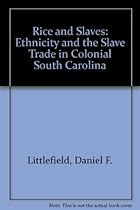

This historic book may have numerous typos; missing text; images; or index. Purchasers can download a free scanned copy of the original book (without typos) from the publisher. 1869. Not illustrated. Excerpt: ... CHAPTER XLIV. The Alabama Leaves Fernando De Noronha For A Cruise On The Coast Of Brazil -- Enters The Great Highway And Begins To Overhaul The Travellers -- Capture Of The Whaler Nye; Of The Dorcas Prince; Of The Union Jack; Of The Sea Lark -- A Reverend Consul Taken Prisoner Alabama Goes Into Bahia -- What Occurred There -- Arrival Of The Georgia Alabama ProCeeds To Sea Again Captures The Following Ships: The Gilderslieve; The Justina; The JaBez Snow; The Amazonian; And The Talisman. THE 22d of April having arrived; we gave up all further hopes of the Agrippina; and went to sea. As we passed out of the roadstead; we cut adrift the four whale-boats which we had brought in from the captured whalers; rather than destroy them. They would be valuable; to the islanders; who had treated us kindly; and it was amusing to see the struggle which took place for the possession of them. The good people seemed to have some anticipation of what was to take place; and all the boatmen of the island had assembled to contest the prizes; in every description of craft that would float; from the dug-out to the tidy cutter. The boatmen stripped themselves like athletes for the fray; and as whale-boat after boat was cut adrift; there was a pulling and splashing; a paddling and a screaming that defy all description; the victors waving their hats; and shouting their victory and their good-bye to us; in the same breath. We steamed due east from the island some forty miles; when we let our steam go down; raised the propeller; and put the ship under sail. The Alabama; with full coal-bunkers and a refreshed crew; was again in pursuit of the enemy's commerce I had at last accomplished my cherished design -- which had been frustrated in the Sumter--of a cruise on the coast of Brazil....
#4776219 in Books 1981-11Ingredients: Example IngredientsOriginal language:EnglishPDF # 1 #File Name: 0807107948216 pages
Review
3 of 7 people found the following review helpful. where's the rice?By starbubblesIt was honestly an okay book. I was expecting it to be a more of a food history than an economic history. But that should have been apparent from the introduction. I was more shocked that rice was only mentioned a handful of times before the second half of the book. With it being first in the title; there should have been a stronger emphasis on rice. What was even more shocking was that South Carolina was not heavily focused on. The locations that took up the majority of the book was Africa; South America; and the Atlantic Slave Trade. South Carolina seemed to be an afterthought. But during the Colonial Era; South Carolina was an afterthought when dealing with international matters. This is not to say that the book wasn't informative or well researched. By all means; it was. It could have been organized in a better way to be more effective. It was often difficult to find a thesis statement anywhere near the first paragraph; to any chapter. If you so happen to pick this book; be prepared to learn about European/African interactions; African farming methods; demand for slaves; and how (if at all) South Carolina took part in it.0 of 1 people found the following review helpful. Five StarsBy Garland ColeGreat great book17 of 17 people found the following review helpful. Excellent; Readable StudyBy A CustomerIn this thorough and readable study; Daniel C. Littlefield examines the African heritage of rice cultivation in colonial South Carolina. Littlefield discusses the choices rice planters made in securing workers from certain African regions; he also discusses the knowledge these Africans brought to the plantation economy. Littlefield argues that expertise in rice cultivation mostly came to South Carolina from Africa. Rice was grown by the Malagasy; the people of Madagascar; and by many peoples of Upper Guinea (a region encompassing the modern nations of Senegal; Gambia; Guinea-Bissau; Guinea; Sierra Leone and Liberia). South Carolina planters; in fact; paid the highest prices for workers from Senegambia (the environs of the Senegal and Gambia rivers); a major center of rice cultivation in Africa. Littlefield argues that; throughout the era of the slave trade; South Carolina merchants and planters showed an increasingly sophisticated knowledge of African regions and ethnic groups. He also asserts that not only African labor; but African expertise helped generate the wealth of the opulent Carolina Lowcountry. This work should prove interesting to those interested in African-American history; Southern history; and colonial American demography. Particularly intriguing is Littlefield's research based on the newspaper advertisements for runaway slaves in South Carolina. That portion of the work includes a list of different African ethnic groups present in South Carolina.